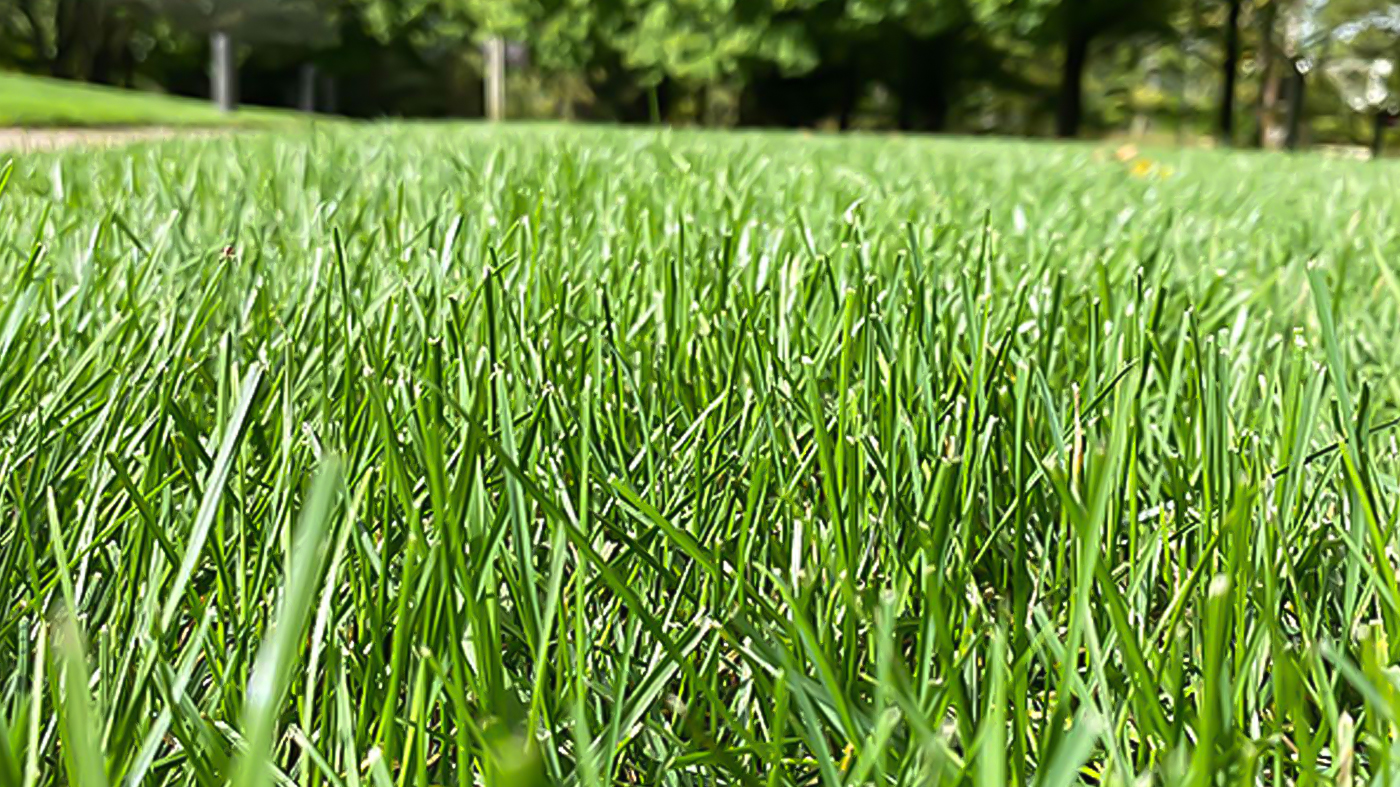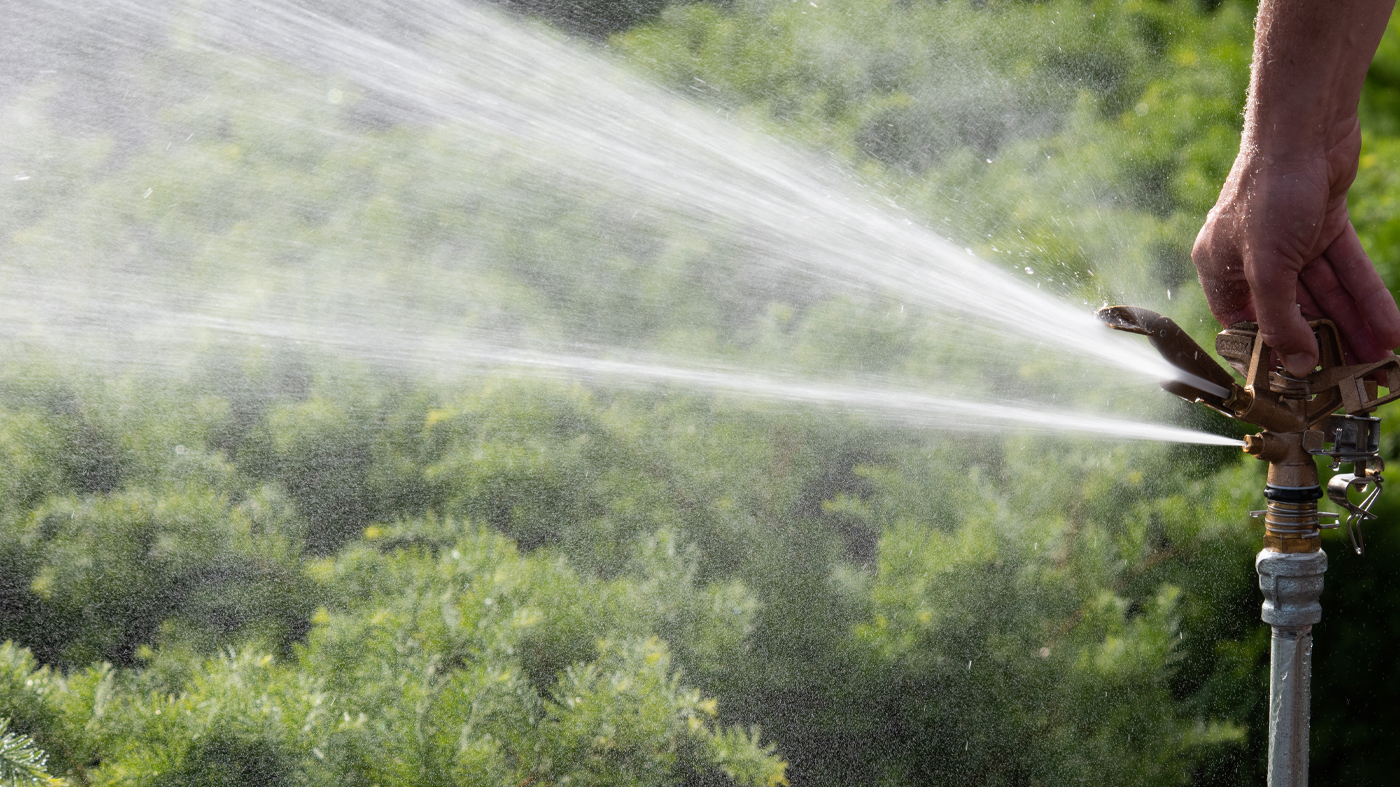

Tips & Techniques
Do-It-Yourself Lawn Care
Start with the Basics
A common and sometimes costly expense for many homeowners is lawn care. No matter whether you maintain your lawn yourself or hire a service, this is a good time to examine the best practices for growing healthy turfgrass. Don't invest more money than is necessary to have an attractive lawn that is also healthy and less likely to have problems with weeds, pests, or disease.
Turfgrass is so common that it is easy to forget it is a plant like any other with specific soil, sun, and moisture requirements.
A commercial soil test can be a cost-effective tool for understanding your soil and knowing what amendments it needs — or doesn't need — to support healthy grass. The results will help to ensure you are fertilizing only as needed with the right nutrients in the proper amounts, and whether there is enough organic matter to maintain good drainage and support earthworms and other soil-based organisms that naturally control thatch.
If bare spots are a problem, always reseed with turfgrass varieties or mixes that match the amount of sun you have in specific areas. This will save you from investing in the ongoing care a plant with little chance of surviving requires. Sometimes a shade-loving grass alternative is a better choice.

Water Wisely, Save Time and Money
Proper watering is essential for growing healthy turf. The best approach is to water deeply and infrequently, and then to let the soil dry out before you water again.
The healthiest lawns get enough water at one time to moisten the top 6 to 8 inches of soil. Generally, an inch of water a week is what actively growing lawns need, more if the weather is especially hot or windy.
A rain gauge is helpful for knowing whether more moisture is actually needed. If it is, how long you need to irrigate cannot be predetermined. It depends on the amount of rainfall, your soil's moisture retentiveness and drainage, whether you irrigate in the morning when evaporation is less, and on the sprinkler or irrigation system used.
Problems can occur when lawns are overwatered, especially in areas with poor drainage or when irrigation systems run on preset schedules. To make it easier for homeowners, many automatic systems can now be equipped with rain sensors.
Problems from overwatering include a greater chance of disease, making your lawn friendlier to grubs, and fertilizer being flushed through the soil before plants can benefit from the nutrients it provides. Because your soil is part of a larger ecosystem, the leached nutrients will have a negative impact on waterways both near and far, causing problems with serious consequences.
Watering deeply and allowing soil to dry out before watering again encourages turfgrass plants to develop more extensive roots systems. Having more roots helps plants to find water in a larger area, making them less dependent on supplemental irrigation and better equipped to tolerate rainfall fluctuations and drought.

Mow High, Put Clippings to Work
Attention to proper mowing techniques can save both time and money, and make it less likely that weeds will find a home in your lawn.
Tall turfgrass actually needs less water than short grass. Taller plants develop deeper roots and longer grass blades shade the soil, reducing moisture loss and making conditions less favorable for weed seeds to germinate. The recommended height to mow lawns is 2½ to 3 inches tall or higher.
Like watering, lawns are best mowed on an “as needed” basis. Grass needs mowing more frequently in the spring and early fall than in summer, when the growth rate usually slows. Grass should be mowed short only at the end of the growing season to prevent damaging frosted or frozen blades.
Try not to remove more than one-third of blade height at any one time. Removing more spurs plants to divert energy from root growth to blade growth. Frequently removing more than one-third (or keeping grass too short) zaps plant vigor, makes grass less drought resistant, and less able to out-compete weeds. If the goal is to have grass around 3 inches tall, mow before blades become 4 inches tall.
It's best to leave grass clippings on the lawn to decompose and provide a regular source of nutrients, primarily blade-greening nitrogen. Mowing frequently or using mulching mowers keeps blade pieces smaller and makes nutrient recycling easier.

First, Nourish the Soil
For some homeowners, the approach for maintaining beautiful lawns is shifting from simply feeding the grass to building rich, healthy soil that can supply nutrients at a rate grass can use. These homeowners leave grass clippings to decompose, top-dress once a year with compost, and use slow-release organic fertilizer only when a soil test says it is needed. They view fast-acting synthetic fertilizers as tools of last resort because of their negative impact on the beneficial organisms on which healthy soils depend, and because of their potential for degrading groundwater and aquatic life.
Even homeowners who prefer the ease and immediate reward of synthetic fertilizers are reconsidering whether all lawns need supplemental nitrogen, phosphorus, and potassium multiple times each year. For them, a one-time application of a slower-release formulation in late fall balances their need to spend less time and money with a desire to maintain a healthy, green lawn.
So, we're back to where we started — paying attention to the basics. The cost of a soil test will often confirm that Chicago-area soils are already high in phosphorus and potassium, and only a nitrogen boost may be needed. Supplying too much fertilizer will cause it to grow faster, need more water, and require mowing — by you or someone else — more often.

